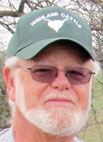
Mike Mackeprang stays current with today’s technology on their family farm
APPLETON CITY, MO. – In 2006, Mike Mackeprang’s family transitioned from cattle farming to raising sheep on their Bates County farm. For many farmers, this is a daunting – almost unthinkable – move, but for Mackeprang, it was well worth the risk. The family made the leap in an effort to conserve space on minimal acreage.
“What I enjoy most about working with sheep,” Mackeprang said, “is that every single one has a different personality. There is a new challenge with each one.”
Mackeprang owns and operates JMJ Club Lambs in Appleton City, Mo., which raises a Hampshire-Suffolk sheep cross for the show industry.
“We’ve also just started raising a cross between Dorper and Katahdin,” Mackeprang said.
The Hampshire-Suffolk cross is primarily raised to exhibit at local, state, and national 4-H and FFA shows; the Dorper-Katahdin cross is more suitable for commercial meat production.
The show industry is always changing, but Mackeprang, who stays current with industry trends, has no trouble keeping up. He said he plans to shift exclusively from the Hampshire-Suffolk cross into the Dorper-Katahdin, citing their maternal instincts and lower cost, which makes the Dorper Katahdins a highly effective recipient for embryo transfers for the club lamb industry.
JMJ Club Lambs maintains an optimistic approach when it comes to lambing. When the lambs are first born, they are given ample amounts of iodine, Vitamin B12, and a nutritional drench. Lambing is performed in winter, so it is done indoors in a heated barn to protect the lambs from the cold. Once the lambs can walk and feed properly, they are moved back outside along with their mothers.
“Once we have decided that a group of lambs is growing well and all are healthy, they are moved into another barn with bigger pens to promote movement and growth,” Mackeprang said.

The operation consists of 13 acres and relies heavily on rotational grazing and “praying for rain.” Mackeprang stated that he recently instituted a practice of raising sorghum-sudangrass in one paddock a year, pointing out its fast growth rates and drought tolerance.
An integral part of the farm’s well-being is the use of drones. Mackeprang asserted that drones have greatly assisted with weed control, as many custom applicators in the area will not spray on such small acreage. He added that using drones instead of ground equipment eliminates the possibility of unwanted soil compaction. Mackeprang said those interested in incorporating drones into their farming practice should do plenty of research before making a decision. The FAA (Federal Aviation Administration) requires training and registration to use drones for agricultural practice.
“For me, that process took a year,” Mackeprang said, “but I believe that the FAA has streamlined it to make it faster.”
Mackeprang said that, when it comes to raising lambs, the biggest challenge is the price of land.
“It’s almost unfeasible for the small farmer to buy land and make a living without another source of income,” he said. Mackeprang offers custom spraying to other farmers who lack the time or ability to apply the chemicals themselves.
In the future, Mackeprang hopes that his lambing and drone operation will become his sole source of income. He anticipates that, with the increase in drone technology and the decreasing cost, drone spraying will become more ubiquitous in smaller-scale agricultural operations.







